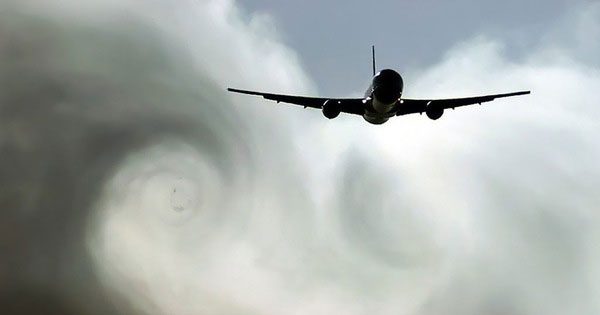Severe turbulence at high altitudes over the Atlantic Ocean has increased by 55% in the past 40 years.
When warm air at ground level interacts with cold air at high altitudes, it creates more turbulence. This alters the flight paths of passengers and crew while also limiting aircraft payloads.

For the U.S., turbulence is estimated to incur an additional cost of over $150 million.
“Please return to your seats and fasten your seatbelts, we are going through some turbulence,” is a message that may be heard more frequently on flights in the coming years. The question arises: global warming and one of its many unexpected and unwanted impacts.
A study by Paul Williams from the University of Reading, UK, recently published in the journal Geophysical Research Letters, shows that clear-air turbulence has been increasingly evident over the past 40 years. These disturbances are not caused by clouds or passing storms but occur when the sky is “clear.”
The busiest air route in the world is the transatlantic route between Europe and North America. From 1979 to 2020, the amount of severe turbulence recorded by airplanes increased from 17.7 hours per year to 27.4 hours, a rise of over 55%. For moderate turbulence, the recorded hours increased from 70 hours to 96.1 hours (+37%), and finally, light turbulence rose from 466.5 hours to 546.8 hours. When summing all types of turbulence, the total has risen from 554.2 hours per year to 670.3 hours per year over the 40 years.
For passengers and crews, these disturbances often result in being strapped in their seats for several minutes, sometimes experiencing real jolts on the aircraft, risking falls, collisions with objects, or hitting their heads on the overhead bins due to not fastening their seatbelts. On the other hand, for airlines, the issue is even more serious as this turbulence increases aircraft wear and tear and maintenance costs. According to a meteorologist involved in the study, just for the U.S., it is estimated that turbulence incurs an additional cost of over $150 million. The study also shows that the Northern Hemisphere is affected by these disturbances twice as much as the Southern Hemisphere and that they occur more frequently in the Fall and Winter. The research indicates that the increasing turbulence also affects regular flight routes across Europe, the Middle East, and the South Atlantic.
This rise in turbulence is rooted in global warming. CO2 emissions warm the air; this warm air interacting with cold air at high altitudes causes sudden changes in winds and flows. The famous jet stream also crosses the Atlantic, often speeding up west-to-east flights over the years and slowing down east-to-west flights more, while warm air limits the potential payload of aircraft.
Particularly, the lead scientist of the research urges airlines and air traffic control services to invest in detecting and predicting atmospheric turbulence in clear skies (scientific term: TAC).


















































